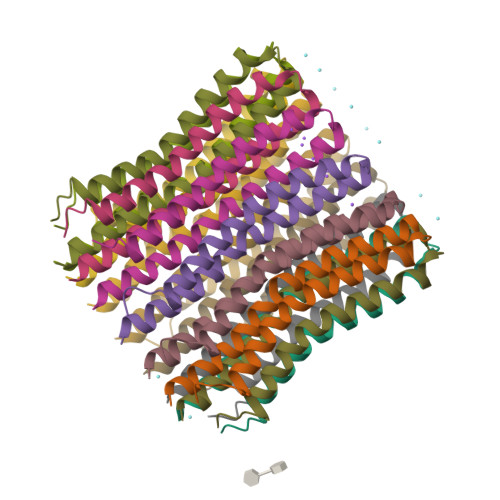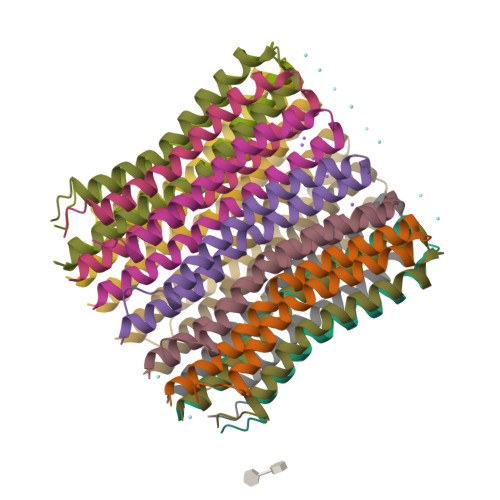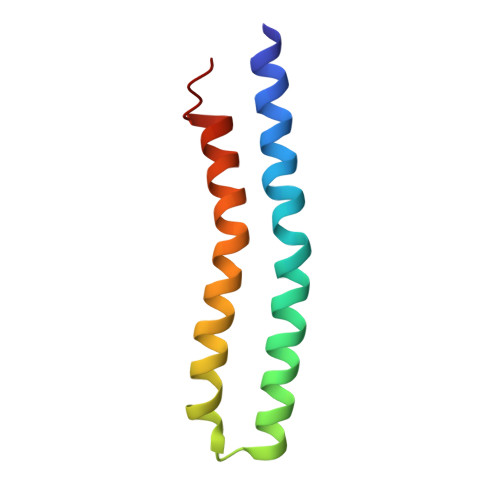Structure and flexibility of the C-ring in the electromotor of rotary F(o)F(1)-ATPase of pea chloroplasts.
Saroussi, S., Schushan, M., Ben-Tal, N., Junge, W., Nelson, N.(2012) PLoS One 7: e43045-e43045
- PubMed: 23049735
- DOI: https://doi.org/10.1371/journal.pone.0043045
- Primary Citation of Related Structures:
3V3C - PubMed Abstract:
A ring of 8-15 identical c-subunits is essential for ion-translocation by the rotary electromotor of the ubiquitous F(O)F(1)-ATPase. Here we present the crystal structure at 3.4Å resolution of the c-ring from chloroplasts of a higher plant (Pisum sativum), determined using a native preparation. The crystal structure was found to resemble that of an (ancestral) cyanobacterium. Using elastic network modeling to investigate the ring's eigen-modes, we found five dominant modes of motion that fell into three classes. They revealed the following deformations of the ring: (I) ellipsoidal, (II) opposite twisting of the luminal circular surface of the ring against the stromal surface, and (III) kinking of the hairpin-shaped monomers in the middle, resulting in bending/stretching of the ring. Extension of the elastic network analysis to rings of different c(n)-symmetry revealed the same classes of dominant modes as in P. sativum (c(14)). We suggest the following functional roles for these classes: The first and third classes of modes affect the interaction of the c-ring with its counterparts in F(O), namely subunits a and bb'. These modes are likely to be involved in ion-translocation and torque generation. The second class of deformation, along with deformations of subunits γ and ε might serve to elastically buffer the torque transmission between F(O) and F(1).
Organizational Affiliation:
Department of Biochemistry and Molecular Biology, George S. Wise Faculty of Life Sciences, Tel-Aviv University, Ramat Aviv, Israel.



















